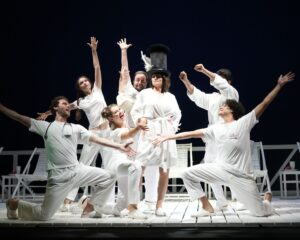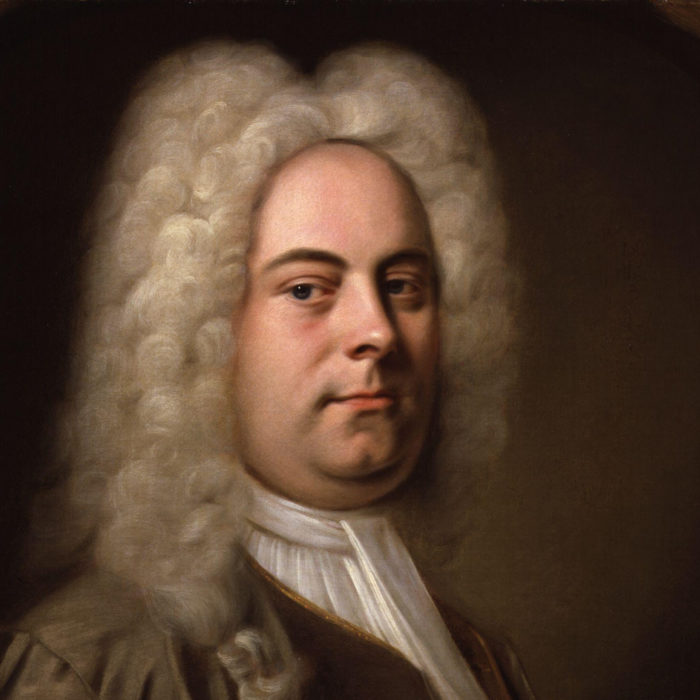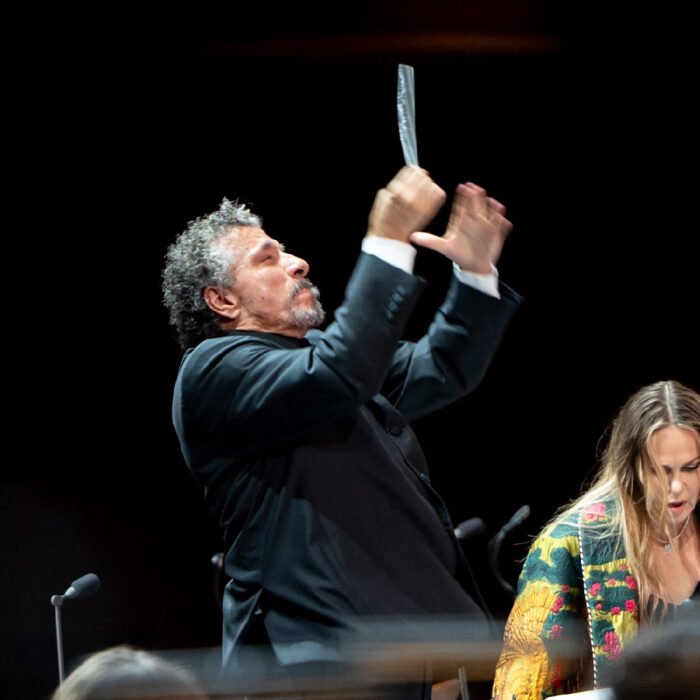
Rossini Opera Festival 2025 Review: Il viaggio a Reims
By Bernardo Gaitan(Photo: Amati Bacciardi / ROF 2025)
Although conceived as a one-act opera, “Il viaggio a Reims” has monumental proportions: it lasts nearly three hours and was therefore divided into three parts at its premiere. It is Rossini’s last opera in Italian, before he devoted himself exclusively to French. Its initial success was remarkable, fueled both by the high expectations surrounding the “Swan of Pesaro’s” first opera for the French capital and by the presence of the foremost Italian singers of the time, all assembled for the occasion. Paradoxically, Rossini authorized only four performances, since he intended to reuse the best of the score in a more enduring work: more than half of “Le Comte Ory” (1828) actually comes from this opera.
The libretto recounts the enforced stay of a group of guests at the “Il Giglio d’Oro” spa in Plombières. Gathered to set off together for Reims in order to attend the coronation of Charles X, they end up stranded at the resort. The unusually large number of singers required and the lightness of the plot, rather than hindering its reception, have in fact favored it. Among the most memorable passages stands out the celebrated fourteen-voice ensemble, the true centerpiece of the opera, in which Rossini pushes to the extreme his mastery of weaving together all the vocal lines into a collective moment of astonishment.
Since 1989, the Accademia Rossiniana “Alberto Zedda” has operated in Pesaro as an advanced training program for young international talents. It has shaped numerous interpreters who are today leading figures in the Rossini repertoire and authentic ambassadors of the Festival in major theaters worldwide. Each year, the selected singers are given the chance to debut at the Rossini Opera Festival (ROF) in the historic Viaggio a Reims, a production that has been performed continuously since 2001. The Festival’s version makes use of the critical edition prepared by the Fondazione Rossini in collaboration with Casa Ricordi, edited by Janet Johnson, with two casts alternating between principal and supporting roles. This review refers to the performance of August 18.
Production & Cast Details
Emilio Sagi’s staging captures the essence of “Il viaggio a Reims,” where the musical and vocal dimensions take precedence over the theatrical. Revived this year by Matteo Anselmi, it retains its classic vitality and dynamism thanks to the youthful energy of singers aged between 18 and 25. The regista relocates the action to a spa on the Adriatic Riviera, transforming the locanda of the Giglio d’Oro into a modern wellness retreat. For most of the opera, the vacationers appear in white bathrobes, matching the staff’s uniforms, while fourteen loungers in the first act and fourteen chairs with small tables in the second suffice to structure the set. A blue cyclorama, suggesting a clear sky, and Pepa Ojanguren’s simple costumes complete a functional and economical design. Despite the chromatic monotony, the production never tires the viewer: over time it has already become a classic, fondly remembered by many professionals who once took part in it during their student years.
Within the young cast, Rosalba Ducato stood out as a strict and irritable Madama Cortese, stern in demeanor and impeccable in her aria “Di vaghi raggi adorno.” Laura Khamzatova offered a convincing Contessa di Folleville, well balanced by the comic touches of Don Prudenzio, the spa’s doctor, portrayed by Jacob Harrison. Maurizio Bove, as Barone di Trombonok, was always engaging, with clear diction and a warm, projected voice. Hiroki Kono contributed a Count Libenskof of beautiful high notes and great agility; his duet “Di che son reo?” with Marchesa Melibea, sung by Anna-Helena Maclachlan, proved a highlight. Jiazhou Wang gave life to a solid Don Álvaro, firm in the lower register and especially amusing in the final flamenco dance, while Huigang Liu delivered a credible Lord Sidney in both diction and stage presence.
Special mention goes to Antonella Granata as Corinna: in “Arpa gentil che fida” and in the improvisations in praise of Charles X, she achieved moments of sublime beauty, with a luminous timbre, generous breath control, and refined musicality. Equally remarkable was Abel Zamora as Cavaliere Belfiore, hilarious in his portrayal of an arrogant and vain young man flaunting his physique in comic poses. His duet with Corinna, “Nel suo divin sembiante,” was one of the evening’s most applauded numbers. Nicola Farnesi, as Don Profondo, captivated the audience in his aria “Medaglie incomparabili,” skillfully imitating various foreign accents.
The ensemble was completed by Aldo Sartori (Don Luigino), Vittoria Brugnolo (Delia), Valeria Gorbunova (Maddalena), Arina Verevkina (Modestina), Mateo Torcaso (Antonio), and Krzysztof Lachman (Zefirino and Gelsomino). The production’s success also owed much to the energy of an enthusiastic and cohesive cast. Musical direction was entrusted to the young maestro Alessandro Mazzocchetti, just 30 years old, leading the Orchestra Rossini of Pesaro. His interpretation revealed overall command of the demanding score, with full sonorities, balance among the sections, and effective crescendos, despite a few minor inconsistencies in tempi, dynamics, and style that did not undermine the performance. The harp was particularly noteworthy, shining in the two female arias accompanied solely by this instrument and in the more delicate passages of the score. Rossini’s trademark apotheotic finales were carried off with vigor.
As in every edition, the ROF audience welcomed the performance with festive warmth, applauding all the performers generously.


